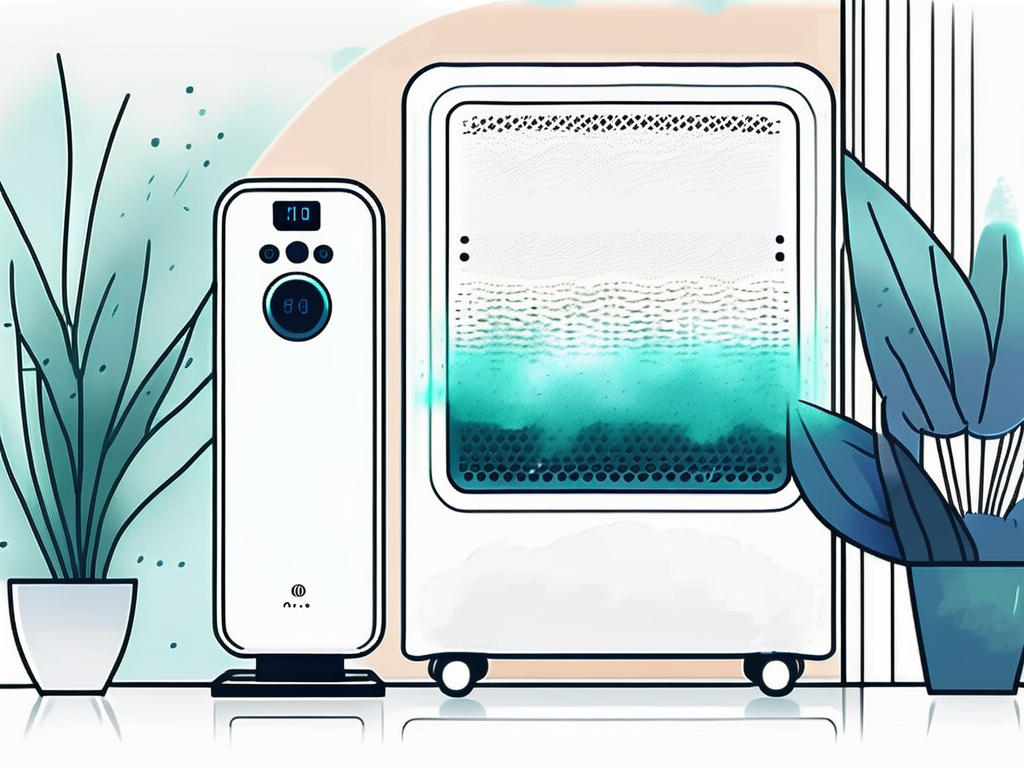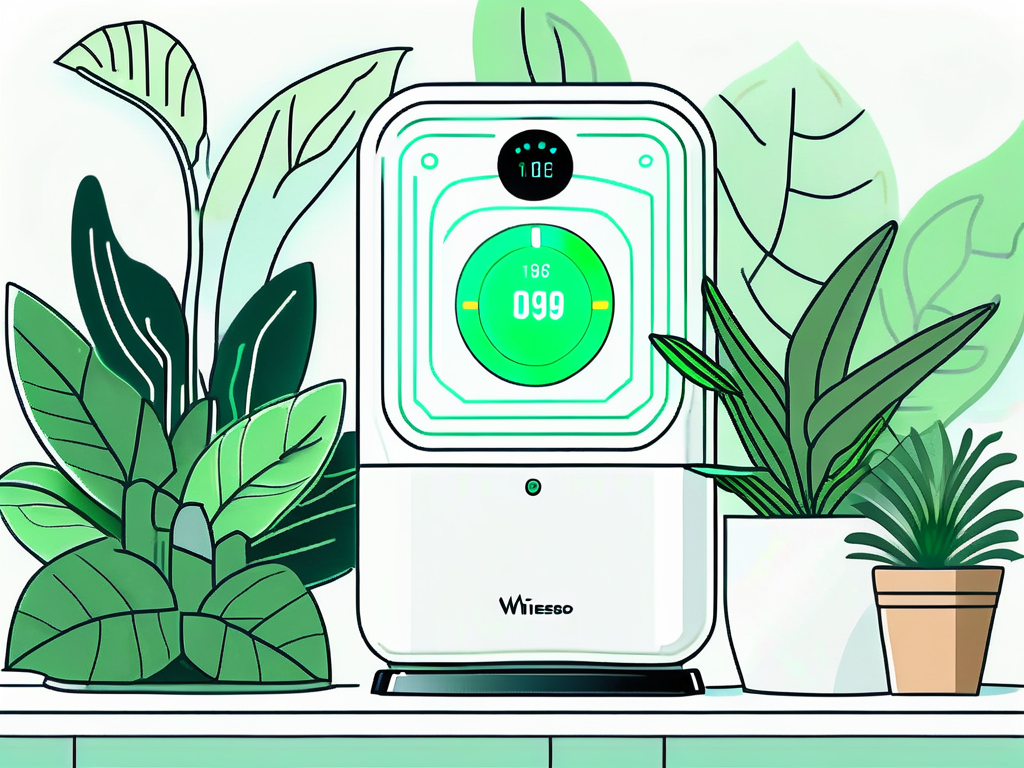Indoor air quality is a crucial aspect of our overall well-being, yet it is often overlooked. We spend a significant amount of time indoors, whether it be at home, work, or school. The air we breathe in these enclosed spaces can have a profound impact on our health and comfort. This is where indoor air testing becomes essential.
Understanding Indoor Air Quality
Indoor air quality refers to the condition of the air within a building and how it affects the health and comfort of its occupants. It is affected by various factors, including pollutants, temperature, humidity, and ventilation. Poor indoor air quality can lead to various health problems, including allergies, respiratory issues, and even long-term illnesses.
Ensuring good indoor air quality is essential for maintaining a healthy and comfortable indoor environment. Proper ventilation is crucial in reducing the concentration of indoor air pollutants. This can be achieved through the use of mechanical ventilation systems, air purifiers, and opening windows to allow for fresh air circulation.
Common Pollutants in Indoor Air
There are numerous pollutants that can be found in indoor air. These can include dust, pollen, pet dander, mold spores, volatile organic compounds (VOCs), and even chemicals from cleaning products. These pollutants can enter our indoor spaces through various sources, such as outdoor air, building materials, and everyday activities.
In addition to these common pollutants, indoor air quality can also be affected by factors such as carbon monoxide from gas appliances, radon from the soil, and asbestos from building materials. Regular maintenance of HVAC systems and conducting indoor air quality tests can help identify and mitigate these additional sources of indoor air pollution.
Health Impacts of Poor Indoor Air Quality
The health impacts of poor indoor air quality can be significant and far-reaching. Exposure to pollutants can trigger allergic reactions, worsen asthma symptoms, and cause respiratory irritation. Prolonged exposure to certain pollutants may even lead to more serious health conditions, such as chronic obstructive pulmonary disease (COPD) and heart disease.
It is important to address indoor air quality issues promptly to protect the health and well-being of building occupants. Implementing proper ventilation strategies, using air purifiers, and reducing the use of harsh chemicals indoors are all steps that can contribute to improving indoor air quality and creating a healthier indoor environment for everyone.
The Science Behind Indoor Air Testing
Indoor air testing is a crucial scientific process that plays a significant role in ensuring the health and well-being of individuals in indoor environments. The measurement and analysis of various parameters in the air are essential for understanding the quality of the air we breathe. By assessing the levels of pollutants, humidity, temperature, and ventilation, experts can gain valuable insights into the overall indoor air quality and pinpoint any potential issues that may impact occupants.
Moreover, indoor air testing is not only limited to residential spaces but also extends to commercial buildings, schools, hospitals, and other indoor environments where people spend a significant amount of time. The data collected through these tests serves as a foundation for implementing strategies to improve indoor air quality and create healthier living and working conditions for everyone.
How Indoor Air Testing Works
Indoor air testing is a meticulous process that typically involves the use of specialized equipment such as air samplers, particle counters, and gas analyzers. These tools are utilized to collect air samples from different areas within a building and measure the concentration of various pollutants present. The collected samples are then carefully analyzed in a laboratory setting to determine the exact composition of the air, including the presence of allergens, mold spores, volatile organic compounds (VOCs), and other harmful substances. This detailed analysis is crucial for accurately assessing the indoor air quality and identifying any potential sources of pollution that may need to be mitigated.
Key Parameters in Indoor Air Testing
During indoor air testing, several key parameters are evaluated to provide a comprehensive understanding of the indoor environment. These parameters include the levels of particulate matter, VOCs, carbon dioxide, carbon monoxide, humidity, and temperature. Particulate matter, for example, consists of tiny particles suspended in the air that can have adverse effects on respiratory health. VOCs are organic chemicals that can off-gas from various sources like cleaning products and building materials, contributing to indoor air pollution. Monitoring carbon dioxide levels is essential for assessing ventilation efficiency, while measuring carbon monoxide helps in detecting potential combustion sources. Additionally, maintaining optimal humidity and temperature levels is crucial for creating a comfortable and healthy indoor environment.
Benefits of Regular Indoor Air Testing
Regular indoor air testing brings numerous benefits, both for our health and overall well-being.

Improving Health and Well-being
By identifying and addressing any indoor air quality issues, regular testing can significantly improve our health and well-being. It allows us to take proactive measures to reduce exposure to pollutants and create a healthier indoor environment for ourselves and our loved ones.
Enhancing Indoor Environment Comfort
Good indoor air quality also contributes to overall comfort in our living and working spaces. Proper ventilation and balanced humidity levels can help regulate temperature, reduce stuffiness, and improve the overall comfort of the indoor environment.
Moreover, regular indoor air testing can provide peace of mind by ensuring that the air we breathe is clean and safe. Knowing that the indoor air quality is being monitored and maintained at healthy levels can alleviate concerns about potential health risks associated with poor air quality.
Preventing Long-Term Damage
Another significant benefit of regular indoor air testing is the prevention of long-term damage to both our health and property. Poor indoor air quality can lead to health issues such as respiratory problems, allergies, and even more severe conditions over time. Additionally, pollutants in the air can also cause damage to furniture, electronics, and building materials.
Steps to Improve Indoor Air Quality
While indoor air testing is an essential step in understanding the quality of our indoor air, it is equally important to take actions to improve it. By implementing a few simple strategies, you can create a healthier and more comfortable indoor environment for you and your family.

One effective way to enhance indoor air quality is by incorporating houseplants into your living spaces. Plants not only add a touch of greenery but also act as natural air purifiers by absorbing carbon dioxide and releasing oxygen. Some plants, such as spider plants and peace lilies, are particularly efficient at filtering out common indoor pollutants like benzene and formaldehyde.
Regular Cleaning and Maintenance
Keeping our indoor spaces clean is crucial for maintaining good air quality. Regular dusting, vacuuming, and cleaning helps reduce the levels of allergens and pollutants in the air. It is also important to regularly maintain heating, ventilation, and air conditioning (HVAC) systems to ensure optimal performance. By changing air filters, cleaning ducts, and scheduling professional HVAC inspections, you can prevent the buildup of dust and mold within your home.
In addition to these routine cleaning practices, consider using natural cleaning products to minimize the introduction of harsh chemicals into your indoor environment. Ingredients like vinegar, baking soda, and essential oils can be effective alternatives to commercial cleaners, reducing the presence of volatile organic compounds (VOCs) in the air.
Using Air Purifiers and Humidifiers
Air purifiers and humidifiers are valuable tools in improving indoor air quality. Air purifiers help remove pollutants from the air, while humidifiers add moisture to dry indoor environments. These devices can help alleviate respiratory symptoms and create a cleaner and more comfortable space. When selecting an air purifier, look for one with a High Efficiency Particulate Air (HEPA) filter to capture fine particles like dust, pollen, and pet dander.
For optimal results, place air purifiers in frequently used rooms and bedrooms to continuously clean the air. Humidifiers are especially beneficial during the winter months when indoor air tends to be drier. By maintaining an optimal humidity level (around 30-50%), you can reduce the risk of respiratory issues, dry skin, and static electricity in your home.
Professional Indoor Air Testing Services
While there are measures we can take on our own to improve indoor air quality, professional indoor air testing services can provide a more comprehensive evaluation and solution.

Indoor air quality is a crucial aspect of our overall well-being, especially considering that we spend a significant amount of time indoors. Factors such as poor ventilation, mold growth, volatile organic compounds (VOCs), and allergens can all contribute to compromised indoor air quality. Professional air testing services can help identify these pollutants and provide recommendations to mitigate their impact on our health.
When to Consider Professional Testing
If you suspect severe indoor air quality issues or have experienced persistent health problems, it may be beneficial to consider professional air testing. These experts have the knowledge and specialized equipment to conduct thorough assessments and provide tailored recommendations.
Moreover, professional air testing can be particularly crucial in certain situations, such as during home renovations or after water damage incidents. These events can introduce new pollutants or exacerbate existing air quality issues, underscoring the importance of regular testing to ensure a healthy indoor environment.
Choosing the Right Air Testing Service Provider
When selecting an air testing service provider, it is essential to consider their expertise and reputation. Look for certified professionals who have experience in assessing indoor air quality. Reading reviews and seeking recommendations can also help ensure you choose a reputable and reliable service provider.
Additionally, inquire about the range of pollutants they test for, as different providers may offer specialized testing for specific contaminants. Understanding the capabilities of the air testing service can help tailor the assessment to address your specific concerns and ensure a comprehensive evaluation of your indoor air quality.
In conclusion, indoor air testing plays a vital role in ensuring the health and comfort of occupants in indoor spaces. By understanding the quality of our indoor air and taking steps to improve it, we can create healthier and more enjoyable environments for ourselves and our loved ones.






